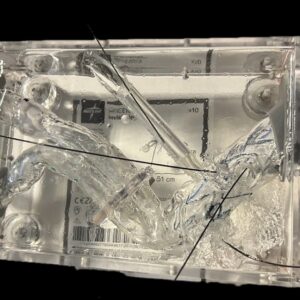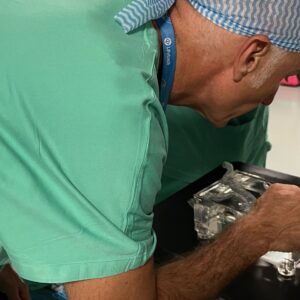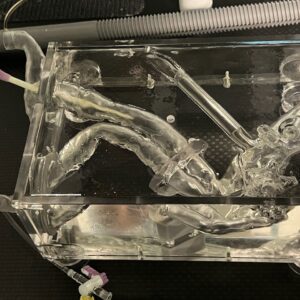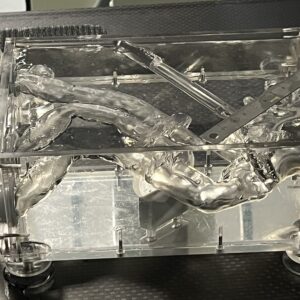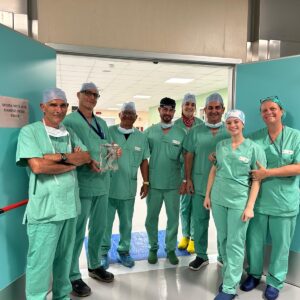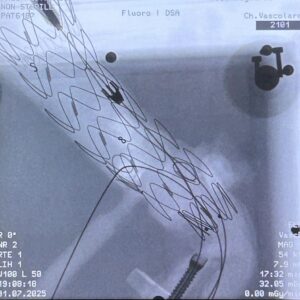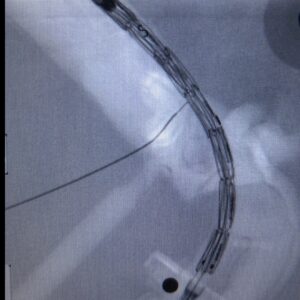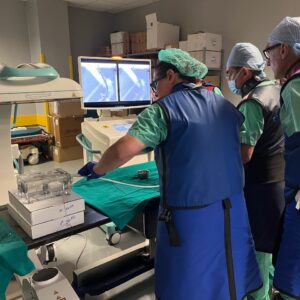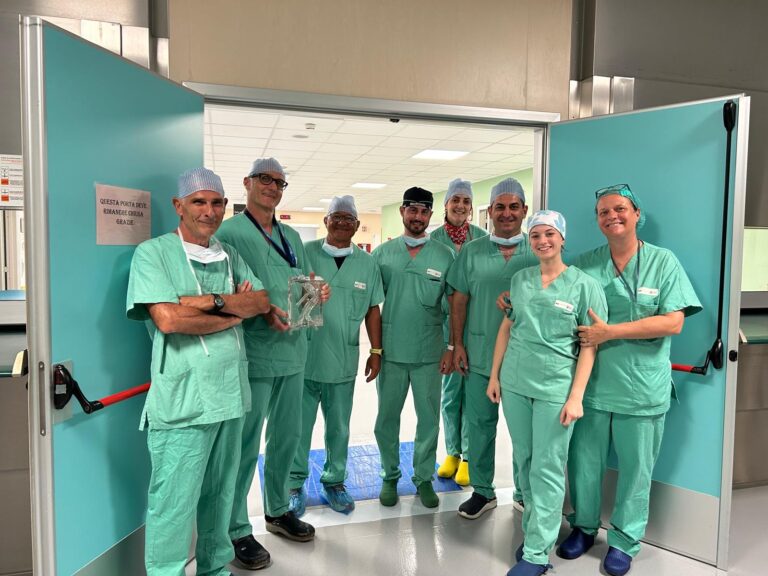On July 1st, 2025, a prototype of a haptic simulator designed and developed by PRINTMED 3D was used for the first time in a simulated procedure involving a Physician-Modified Endograft (PMEG) at the Vascular Surgery Unit of the ASST Grande Ospedale Metropolitano Niguarda, led by Dr. Valerio Tolva. This technique, still under development both clinically and technically, could offer significant benefits for patients affected by complex aortic disease who cannot wait for the construction of a custom-made endograft.
During the PMEG procedure were present the developers of the PRINTMED 3D haptic simulator: Maurizio Vertemati (Head of Virtual Reality and 3D Reconstruction) and Francesco Cavaliere (3D Printing Coordinator, Department of Physics).
The simulator, which accurately reproduces the anatomy of an abdominal aortic aneurysm of a patient awaiting surgery, was generated from the patient’s CT scans and reconstructed in 3D. After a post-processing phase, it was 3D printed using a specially developed polymer blend designed to replicate the physical and elastic characteristics of the original blood vessel, while also providing high-fidelity surgical and anatomical detail. The materials used to reproduce the model allow for sterilization in compliance with regulatory standards.
In this first case, the procedure initially involved the bench-top construction of the PMEG starting from a standard tubular endograft with a diameter of 26 mm. The PMEG was designed using a CT-guided model. Once modified, the endograft was implanted into the haptic model using an endovascular technique in the operating room at Niguarda, where it was possible to deploy the graft and cannulate the celiac, mesenteric, and renal arteries.
The entire PMEG simulation was completed in approximately 3.5 hours, from the beginning of the PMEG model design to the cannulation of the vessels. Timing was monitored to ensure the model could be replicated in emergency settings, enabling a time-effective decision-making process for both elective and urgent procedures.
The future development of this prototype—resulting from the collaboration between PRINTMED 3D and the Vascular Surgery Department of Niguarda—may allow for personalized (patient-specific) surgical planning in the treatment of complex aortic aneurysms that cannot be addressed with traditional surgical techniques, potentially minimizing intraoperative risks and providing valuable educational opportunities for vascular surgical teams.
Paolo Milani, Dipartimento di Fisica, Università degli Studi di Milano
Maurizio Vertemati, Dipartimento di Scienze Biomediche e Cliniche, Università degli Studi di Milano
Francesco Cavaliere, Dipartimento di Fisica, Università degli Studi di Milano
Valerio Tolva SC Chirurgia Vascolare. ASST GOM Niguarda
Alberto Froio SC Chirurgia Vascolare. ASST GOM Niguarda, Università degli Studi di Milano-Bicocca
Maria Teresa Occhiuto SC Chirurgia Vascolare. ASST GOM Niguarda
Giulia Tartufari Scuola di Specialità in Chirurgia Vascolare, Università degli Studi di Milano
